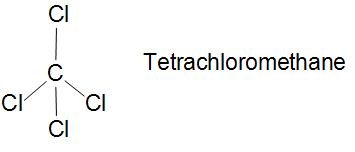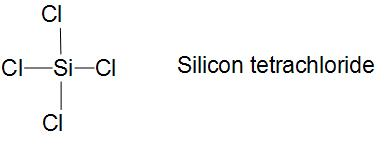
The correct order for the boiling point between $CC{{l}_{4}}$and$SiC{{l}_{4}}$ is
A.$CC{{l}_{4}}>SiC{{l}_{4}}$
B.$SiC{{l}_{4}}>CC{{l}_{4}}$
C. $SiC{{l}_{4}}=CC{{l}_{4}}$
D.None of these
Answer
582k+ views
Hint: Draw the structure and observe their polarity whether they are polar or non-polar and electronegativity difference between the elements. Here, electronegativity is the measure of the tendency of an atom to attract a shared pair of electrons. Polar means having electronegativity difference between the different atoms in a molecule and for non-polar there is no such electronegativity difference.
Complete answer:
Here both Carbon and silicon are P-block elements of 14 groups; they both share common properties but when they are making bonds with Halide (Chlorine) in this example they show differences in the bond they are making ,let us see what is the difference.
In Tetrachloromethane the bond $C-Cl$ is polar (more than silicon) due to which it has strong holding of the molecule or we can say strong intermolecular forces between the bonds.
As we know if the bonds are strongly bonded with intermolecular forces then it is really hard to break the bond and we need to give more external energy same happen in $C-Cl$ due it which it has high boiling point of $76.72{}^\circ c$.

Now in Silicon tetrachloride the bond $Si-Cl$ is also polar but less than $C-Cl$ and the electronegativity difference between $Si$ and $Cl$ is less due to which it has less intermolecular forces between bonds.
As we talked about intermolecular forces here the forces are less due to which the bond is weak and easy to break and less energy is needed due to which it has a low boiling point of $57.65{}^\circ c$.
So we can conclude Tetrachloromethane has higher boiling point than Silicon tetrachloride.

$CC{{l}_{4}}$ $>$ $SiC{{l}_{4}}$.
($76.72{}^\circ c$) ($57.65{}^\circ c$)
Note: The electronegativity difference between silicon and chlorine is less and carbon and chlorine are more as we know the more the electronegativity difference the more the bond will be strong. As we discuss here the bonds were $C-Cl$ and $Si-Cl$ are both polar in nature but the whole molecule is nonpolar.
Complete answer:
Here both Carbon and silicon are P-block elements of 14 groups; they both share common properties but when they are making bonds with Halide (Chlorine) in this example they show differences in the bond they are making ,let us see what is the difference.
In Tetrachloromethane the bond $C-Cl$ is polar (more than silicon) due to which it has strong holding of the molecule or we can say strong intermolecular forces between the bonds.
As we know if the bonds are strongly bonded with intermolecular forces then it is really hard to break the bond and we need to give more external energy same happen in $C-Cl$ due it which it has high boiling point of $76.72{}^\circ c$.

Now in Silicon tetrachloride the bond $Si-Cl$ is also polar but less than $C-Cl$ and the electronegativity difference between $Si$ and $Cl$ is less due to which it has less intermolecular forces between bonds.
As we talked about intermolecular forces here the forces are less due to which the bond is weak and easy to break and less energy is needed due to which it has a low boiling point of $57.65{}^\circ c$.
So we can conclude Tetrachloromethane has higher boiling point than Silicon tetrachloride.

$CC{{l}_{4}}$ $>$ $SiC{{l}_{4}}$.
($76.72{}^\circ c$) ($57.65{}^\circ c$)
Note: The electronegativity difference between silicon and chlorine is less and carbon and chlorine are more as we know the more the electronegativity difference the more the bond will be strong. As we discuss here the bonds were $C-Cl$ and $Si-Cl$ are both polar in nature but the whole molecule is nonpolar.
Recently Updated Pages
Master Class 11 Economics: Engaging Questions & Answers for Success

Master Class 11 English: Engaging Questions & Answers for Success

Master Class 11 Social Science: Engaging Questions & Answers for Success

Master Class 11 Biology: Engaging Questions & Answers for Success

Class 11 Question and Answer - Your Ultimate Solutions Guide

Master Class 11 Business Studies: Engaging Questions & Answers for Success

Trending doubts
What is meant by exothermic and endothermic reactions class 11 chemistry CBSE

10 examples of friction in our daily life

One Metric ton is equal to kg A 10000 B 1000 C 100 class 11 physics CBSE

Difference Between Prokaryotic Cells and Eukaryotic Cells

What are Quantum numbers Explain the quantum number class 11 chemistry CBSE

1 Quintal is equal to a 110 kg b 10 kg c 100kg d 1000 class 11 physics CBSE




